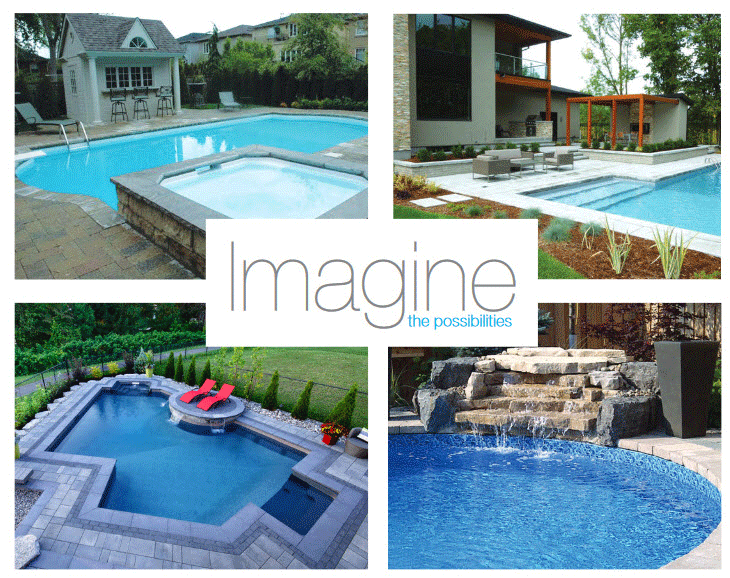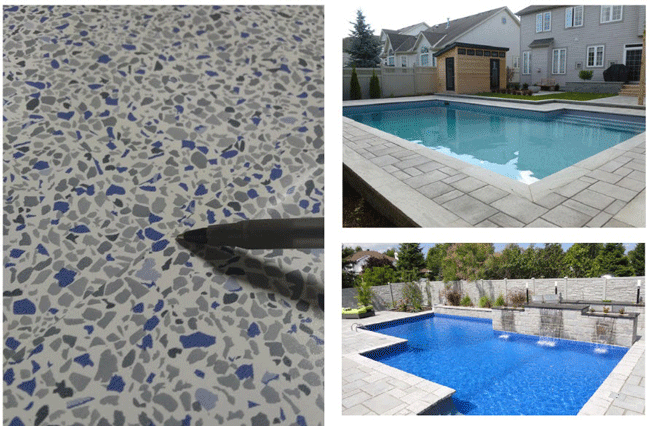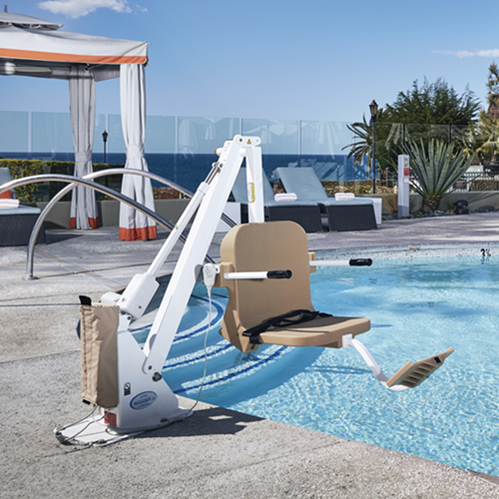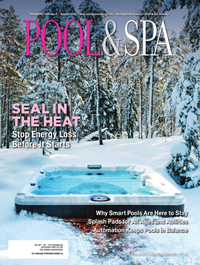Sealing concrete pools
Resisting pressure
One of the most important factors to consider when selecting a waterproofing product is its ability to resist negative-side hydrostatic pressure, which is water pressure that passes through the substrate and presses on the back side of the coating.
Remember, the coating is working to keep water in the structure (i.e. the swimming pool); however, its job is to also make sure that ground water does not interfere with or cause failures for the coatings applied to the pool’s interior.
As ground or rainwater accumulates, it can travel through the concrete pool shell from the outside, creating a build up of negative-side hydrostatic pressure behind the coating. When water comes up against the coating, it literally tries to push the coating away from the surface. Flexible coatings can, and usually will, bubble up and fail under this type of pressure. To counter this, it is important to use a base or first coat capable of withstanding negative-side hydrostatic pressure when constructing an inground swimming pool.
Consider the water sanitation method
Proper water chemistry is essential to maintaining safe and consistent swimming pool operation. In fact, the sanitation method used in the swimming pool is also an important factor to keep in mind when selecting the pool’s waterproofing material and finish coat. In instances where the waterproofing is also the finished wearing coat (i.e. directly in contact with the water and subjected to chemicals versus being under plaster where it is protected), it is even more important the coating withstands the environment.
Private pools typically have a chlorine content of approximately three to five parts per million (ppm), while in commercial or public pools the levels can be as high as 15 ppm to fight bacterial growth. In addition to chlorine, ozone and bromine are also used to combat bacteria and all three can potentially cause deterioration of pool coatings. Through chemical attack, an unengineered plaster finish can breakdown, discolour and pit.
The water’s pH level is another important consideration when choosing waterproofing products. Traditional pool plasters can become discoloured or have excessive wear when pH levels fall outside the seven to 7.6 optimal range. Therefore, it is wise to select a more durable waterproofing system.
A good starting point
While these are not the only factors to consider when selecting a waterproofing system for a swimming pool, they provide a good starting point and should be taken into consideration on every project. Following these guidelines will also generally highlight any other potential issues that might pose problems, allowing them to be addressed before construction begins. When in doubt consult the product manufacturer, as they can provide assistance in selecting the proper solution.
 Mike Mudrick is the product manager for Aquafin Inc., an Elkton, MD-based manufacturer of products for waterproofing, vapour proofing and concrete repair. Mudrick has been in the construction and waterproofing industry for more than 20 years and his expertise comes from extensive field and formulating experience. He can be reached via e-mail at mmudrick@aquafin.net.
Mike Mudrick is the product manager for Aquafin Inc., an Elkton, MD-based manufacturer of products for waterproofing, vapour proofing and concrete repair. Mudrick has been in the construction and waterproofing industry for more than 20 years and his expertise comes from extensive field and formulating experience. He can be reached via e-mail at mmudrick@aquafin.net.





